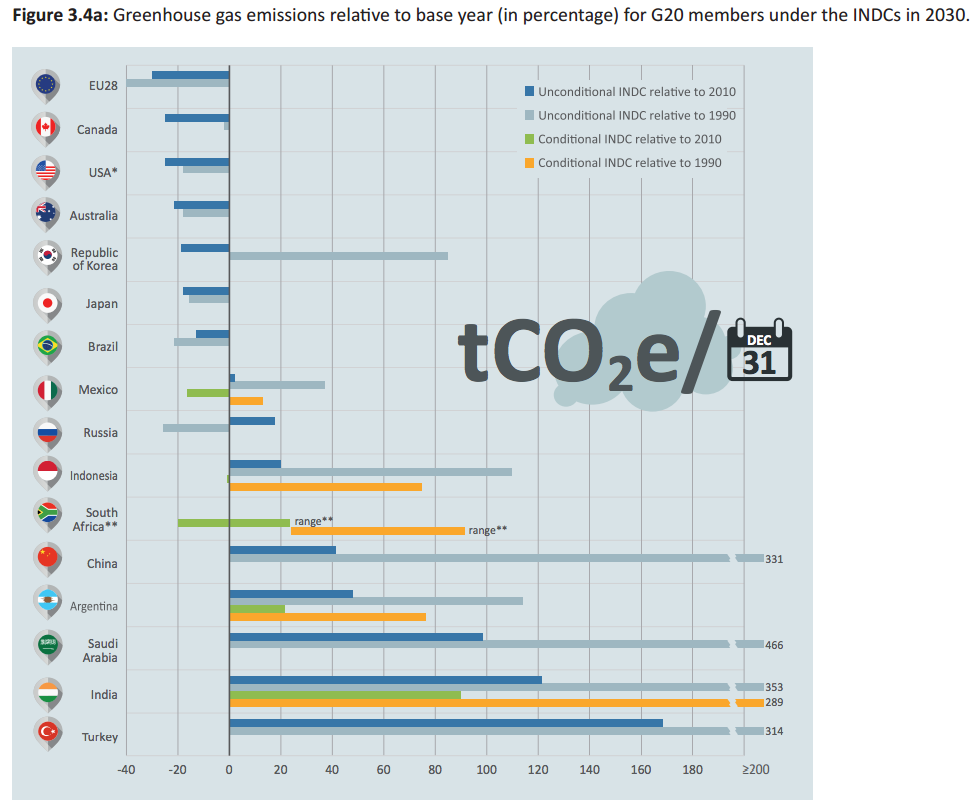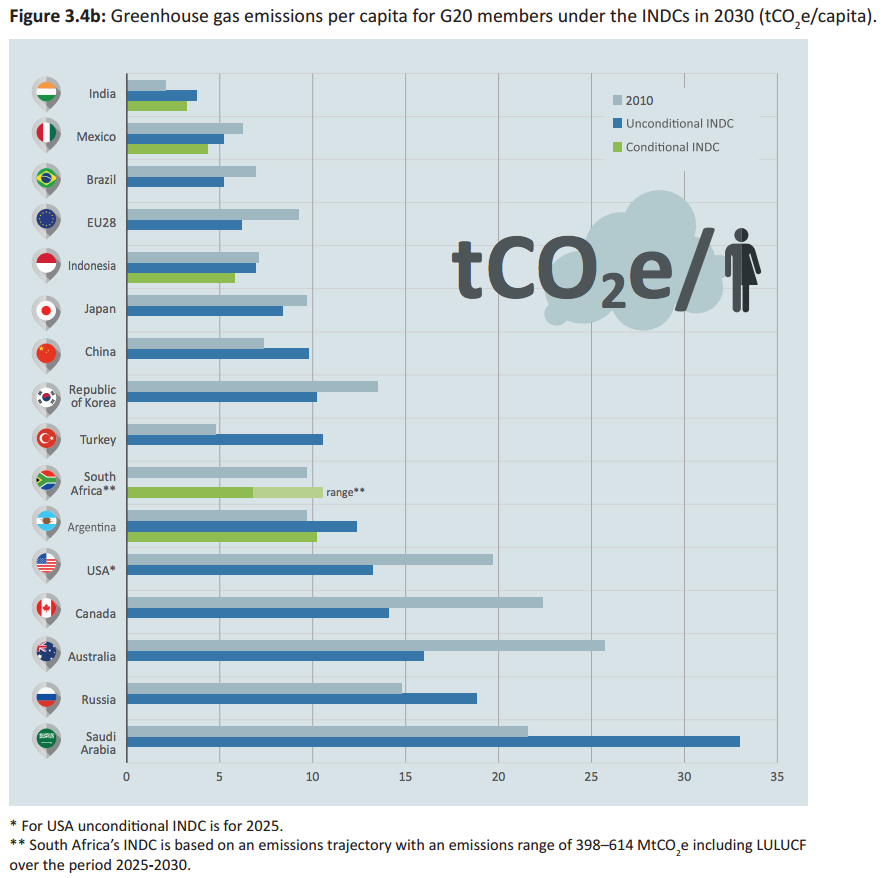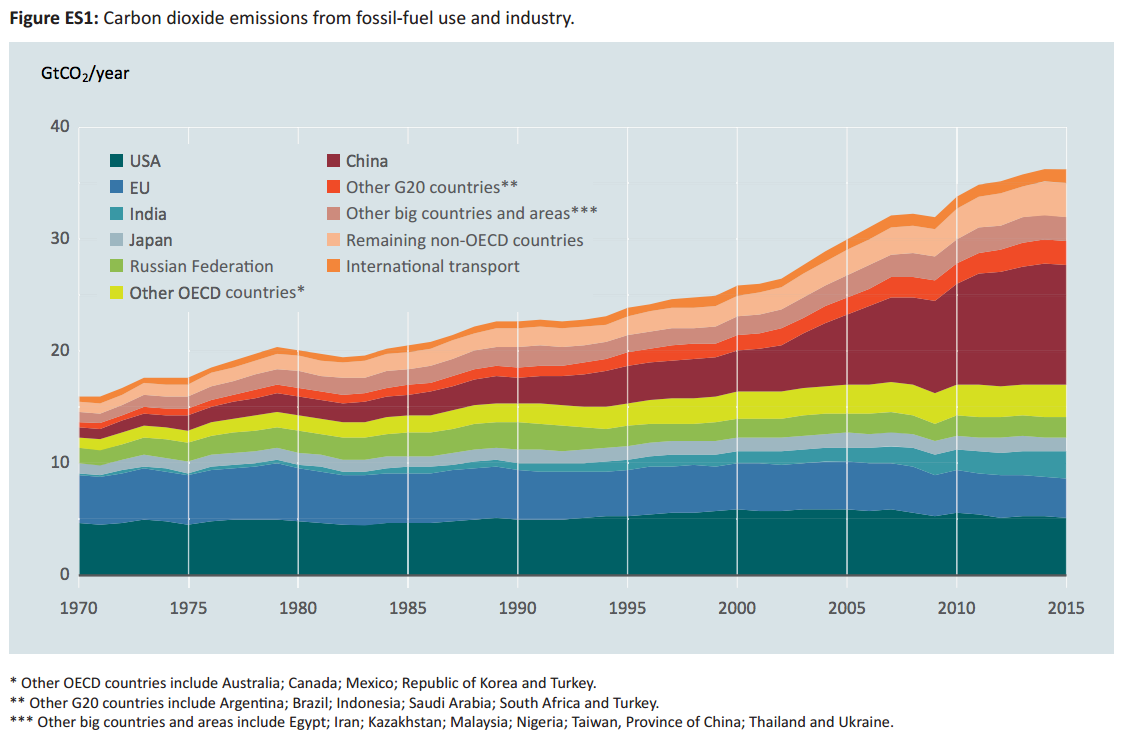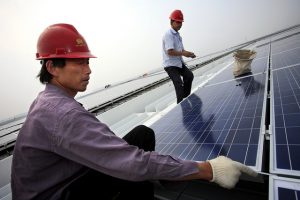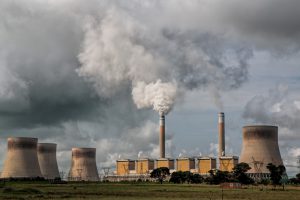Countries must act immediately to deepen emissions cuts if the world is to stand a chance at limiting global warming to 1.5 degrees Celsius this century, according to a new report from the United Nations Environment Programme (UNEP).
Released the day before the Paris Agreement came into force, the report says global emissions must fall by a further 25% from the predicted 2030 level, or by 12-14 gigatonnes, if the world is to remain on course to meet its climate targets.
Since the early ratification of the Paris Agreement in October, the pledges of countries to control greenhouse gas emissions have come under increasing public scrutiny, and will be a focus of the November 7-18 summit of the United Nations Framework Convention on Climate Change (UNFCCC) in Marrakech, Morocco.
"Things are moving in the right direction… [but] we have to peak these global emissions by 2020 if we are going to make the lower end of our trajectory,” said Jacqueline McGlade, chief scientist for UNEP and co-author of the Emissions Gap Report 2016.
This year, the annual UNEP study measured the gap between the emissions cuts needed to stabilise global warming and the pledges made in 2010 by 147 to reduce emissions. These had been submitted by the governments via the Cancun Pledge (the economy-wide targets to reduce emissions presented to the UN in 2010), and the Intended Nationally Determined Contributions (or INDCs, the action each individual government intends to take under the Paris Agreement).
The biggest difference compared with last year’s report was the emphasis on the need for countries to limit global temperature increase to 1.5 degrees Celsius, which would reduce the danger of “locking-in” carbon-intensive technologies and raising the cost of a global transition to low emissions in the long-term.
However, scientists said that while hitting the high ambition 1.5 target would reduce the impacts of climate change that are already being felt sharply across the planet it would not eliminate them. This year, global temperatures and sea levels rose to record-breaking levels, leading to severe droughts, floods, storms, loss of life, agriculture and the displacement of people.
Must do better
The report was explicit in its message that countries need to accelerate action before 2020 in order for 2030 levels of global greenhouse gas emissions to be consistent with the longer-term goals of the Paris Agreement.
“While members of the G20 are collectively on track to meet their Cancun pledges for 2020, these pledges fall short of creating a sufficiently ambitious starting point to align with the temperature targets of the Paris Agreement,” said the report’s authors.
On a more optimistic note McGlade said, “We are seeing global CO2 (carbon dioxide) levels stagnate for the first time, and we are absolutely able to deliver a transformative pathway.” The largest reductions in carbon emissions have taken place in the countries with the highest rates of emissions per unit of GDP.
According to the report, China, the European Union and India are expected meet their pledges without purchasing offsets, while Brazil and Japan are expected to meet the majority of their targets. The United States, however, will need to take further action and purchase offsets to keep up. Saudi Arabia and Russia are lagging behind other countries in their efforts to reduce per capita emissions and were described as “real concerns” by the authors.
China and India’s pledges are framed in terms of greenhouse gas intensity reductions from 2005 levels. China has so far promised a reduction of 40-45% in emissions intensity and is expected to achieve a reduction of at least 42%.
Meanwhile, India reports that it achieved a 12% reduction in emissions intensity between 2005 and 2010, while some analysis showed a 17% reduction from 2005 to 2012 (out of a pledged reduction of 20-25% from 2005 to 2020). Overall, the data showed India to be on track for reductions of 28-36% by 2020.
Mind the gap
The report found that global emissions must be no higher than 42 gigatonnes of carbon dioxide equivalent by 2030 to have a chance of limiting average global temperature rise from the pre-Industrial Age to two degrees Celsius by the end of this century; or 39 gigatonnes for 1.5 degrees.
The most transformative changes must take place in the building, industrial and transport sectors with energy efficiency savings expected to be the biggest driver of further cuts. Investment in energy efficiency increased globally by 6% to US$221 billion in 2015, indicating that action is already happening.
Hans Olav Ibrekk, policy director for the energy sector of Norwegian Ministry of Foreign Affairs said the gap could not be closed without reforming the global energy sector. “The solution to climate change is energy policy,” he said.
“China will be the biggest leader for environmental change in the world over the next 10 years,” said Erik Solheim, head of UNEP. He praised China for its leadership in bringing renewable energy online (China now owns half of the world’s wind power), reducing the cost of solar energy globally, empowering its Ministry of Environment to punish heavy polluters, and for quickly identifying the Paris Agreement as a huge business opportunity.
“China is tackling its cities and improving the quality of life of its citizens,” Solheim said, adding that the government would need to apply rigorous environmental standards to its overseas infrastructure projects, which have raised concerns over their potential to add to pollution in developing countries.
The rapid rise in electric vehicles in India, as well as China, has come in for praise by the report’s authors. They were also supportive of India’s plan to have dedicated freight corridors so as to move more goods by rail rather than by road, which can cut greenhouse gas and other emissions substantially. “India’s INDC estimates that these corridors could reduce emissions by about 457 million tonnes of carbon dioxide over 30 years, a figure that could increase if electricity were decarbonised,” says the report.

